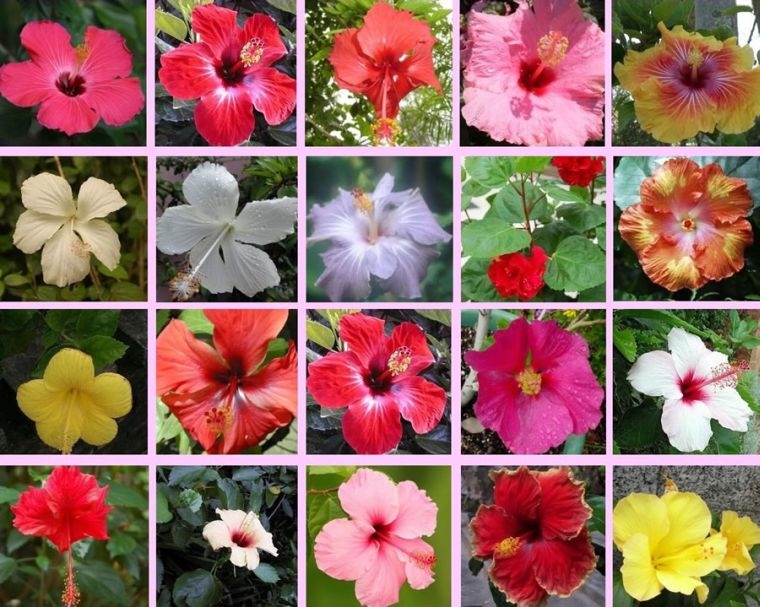Flowers in the garden. Walk through the garden. July Flowers
More and more gardeners are engaged in growing flowers in their garden. This is understandable - the costs are small, it works with pleasure, the result obtained exceeds all expectations. The variety of colors in the dacha, a colorful placer of different colors and their fragrant aromas best affect the emotional background of residents and guests of a country house.
Flowers in the garden begin to bloom in early spring and continue to delight us with their beauty until late autumn. Therefore, it is important to pick up the seeds or seedlings of plants so that some complete flowering, while others just begin to bloom. Just in this case, we will get the blossoming garden as long as possible.
With the right approach to growing plants, as early as April, as soon as the snow melts, the first spring heralds of tulips bloom in the garden.
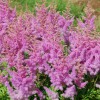
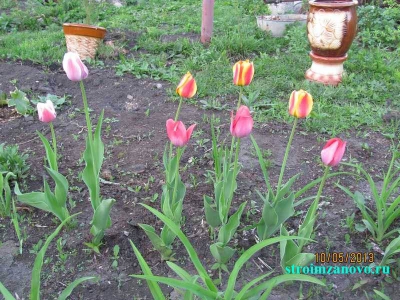
In ancient times, in the 17th century, a single tulip could cost a fortune. They were engaged in breeding only the rich and noble people. Today, one onion costs several rubles.
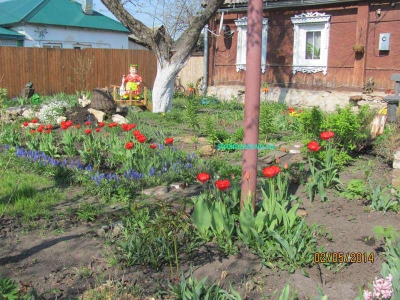

FLOWERS IN JUNE
In the beginning of summer a riot of colors and aromas begins in the garden. In June the violet garden (viola) or pansies bloom.
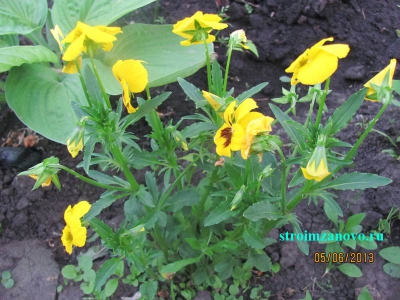
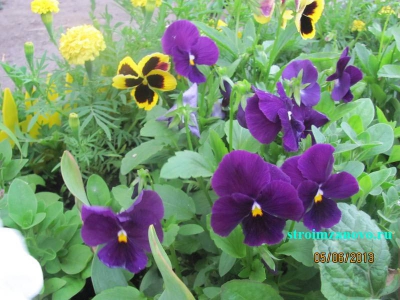
In June, a Turkish carnation blooms, a biennial plant with multi-colored flowers of five petals. Flowering of carnation Turkish continues until mid-July.
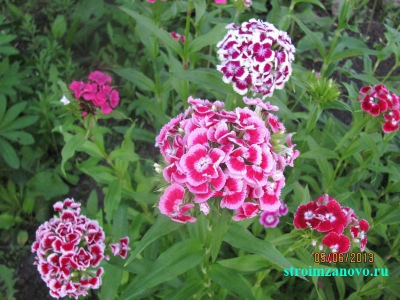
Not far from the carnation, you can plant a herb with small white fragrant flowers iberis (Iberian). Iberis will bloom until the end of August - beginning of September.
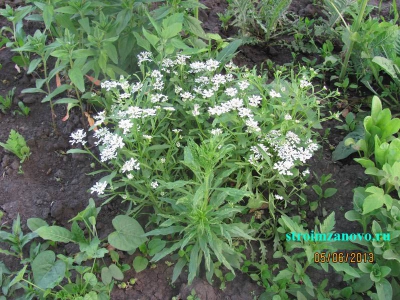
Also in June, the grass shrine blooms. This is an unpretentious perennial plant with beautiful buds in the form of small stars. Great for planting on the alpine slide.
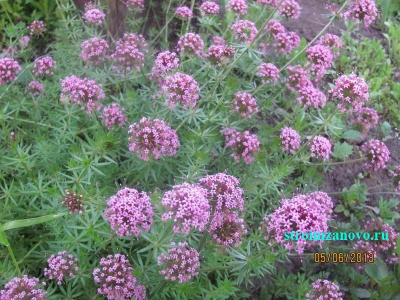
Lupine is another plant that begins to bloom in June. This is a beautiful tall flower with large emerald leaves and multi-colored buds will bloom all summer.
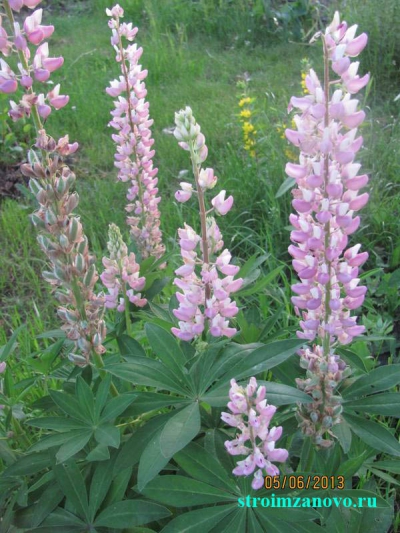
One of the most fragrant flowers is considered mattiola. Despite the small size of the inflorescences and flowering in the evening and night, mattiol must be planted on the site.
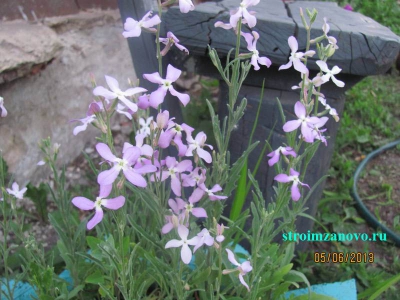
The foxglove has received such name due to the fact that its flowers resemble the shape of a thimble.

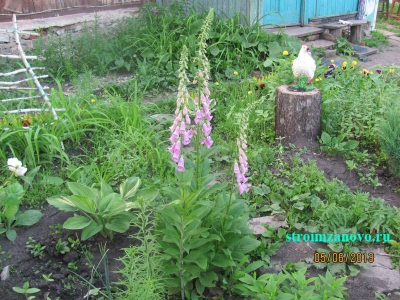
Different types of petunias are very widely used to decorate flower beds, flower beds or balconies.

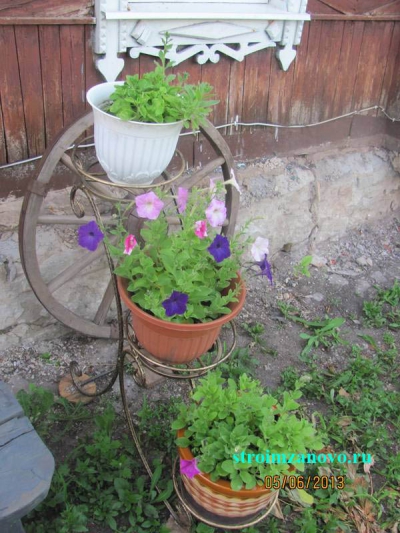
Pelargonium, we also grow in flower pots. All summer she spends in the fresh air, comfortably settled on.
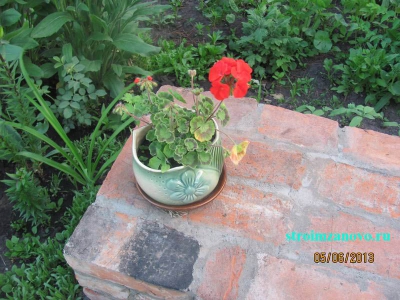
Gardeners love peonies for large and lush flowers, bright green leaves. In our garden, too, there was a place for this spectacular plant.

What kind of garden will do without roses. There is a huge variety of its various species. In our garden grow classic pink roses, which we annually give to Svetka Sokolova for her birthday.
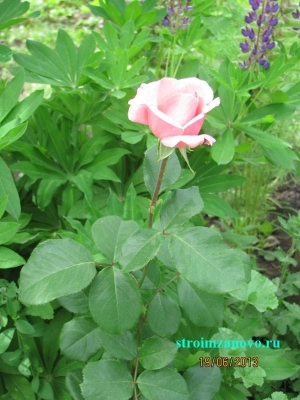
In June, sunflowers begin to gain strength and bloom. If you plant an ordinary sunflower instead of an ornamental garden, expect that it can grow up to 2 meters high at the end of summer.
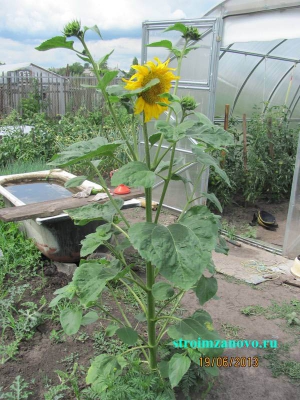
Lovers of exotic plants can be planted in the garden decorative cabbage. In June, it will begin to grow actively and will delight you with its beauty until late autumn.
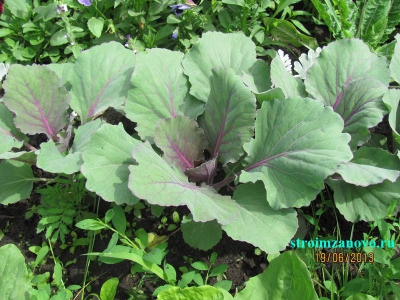
FLOWERS IN JULY
July is coming, midsummer. The garden is filled with new colors. On our site stands out with its colored cap hydrangea. Gardeners grow them for large beautiful inflorescences.

Another flower, sung in songs and poems, also blooms in July.
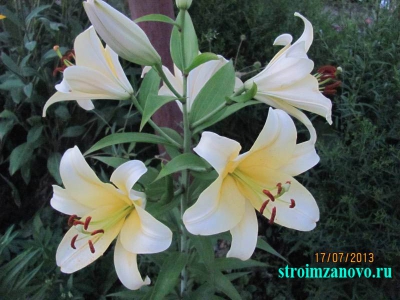
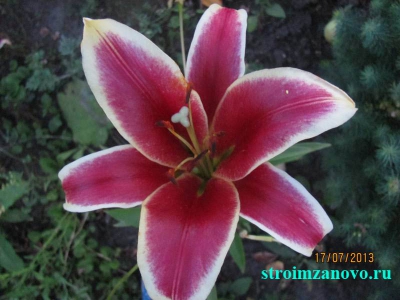
Be sure to plant in the garden an unusual plant night candle (enotera).
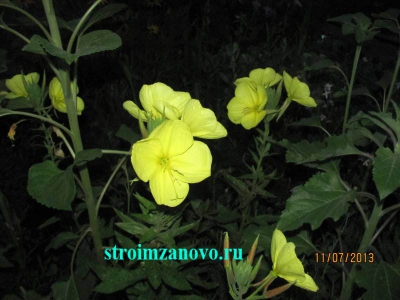
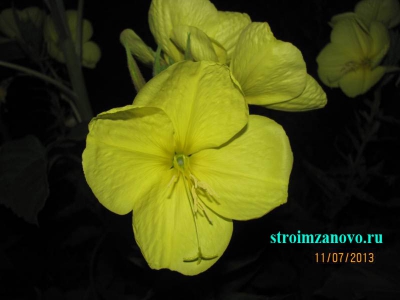
Video
Phlox - small compact plants with lush inflorescences. They are unpretentious in care, frost-resistant. Great for decoration of rock gardens or for the decoration of the coast. Flowering continues all summer.
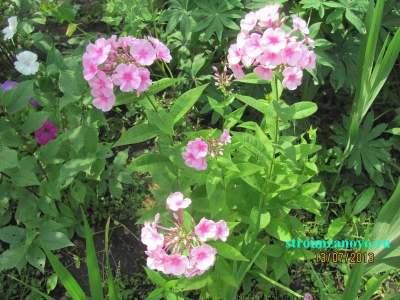
Very beautiful look in the summer garden zinnia. This is quite a popular plant among summer residents. Zinnias look original on lawns, decorating the emerald grass surface with bright baskets of flowers.
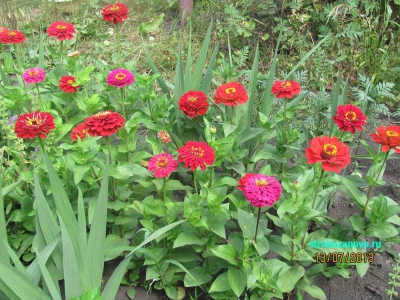
Perfect for decorating the site rudbeckia. These are flowers of small height with bright, mostly yellow, petals. It blooms from July to September, practically does not require care, but it pleases the eye with its brightness and perfectly enhances the mood.
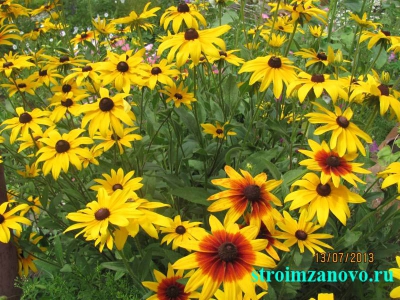
In July, dahlia begins to bloom - a high thermophilic plant with large buds. They look equally good both from close up and from afar. Summer residents love to surprise friends with huge bouquets of dahlias.
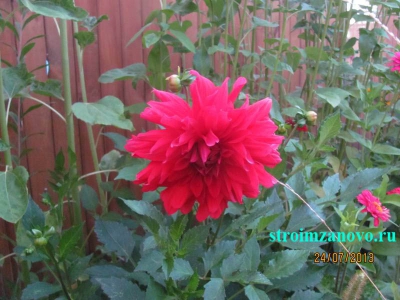
Sunflowers, feeding on rainwater, are rapidly increasing in size and become like a small sun.
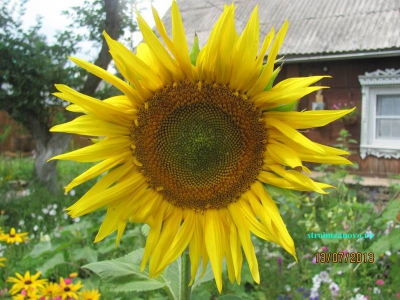
FLOWERS IN AUGUST
In the last summer month, the flower garden is still rampant with intoxicating scents, drowning the head of the owners and their friends. Dahlia has gained strength, its caps have become saturated with color and maximum size.
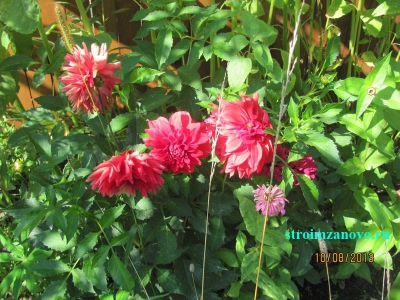
Still lily pleases eyes.

Terry marigolds with yellow flowers with their sharp aroma frighten away harmful insects from neighboring flowers, thereby prolonging their short but so vivid life.
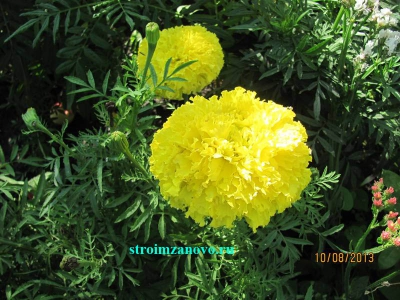
In August, gladioli bloom in the garden. Despite the fact that these flowers are laborious to care, many gardeners plant them on the site. A large number of flowers on a powerful stem look very impressive. Gladiolus looks especially beautiful in a bouquet - a huge number of First-School school bouquets make up exactly of them. Another advantage of them is that they stand in the cut water for a very long time, dissolving all their buds.

Hydrangea still blooms beautifully, without losing a single petal from the snow-white cap.

Petunia looks great not only in pots, but among the still green grass, standing out on its background with small bright flowers.
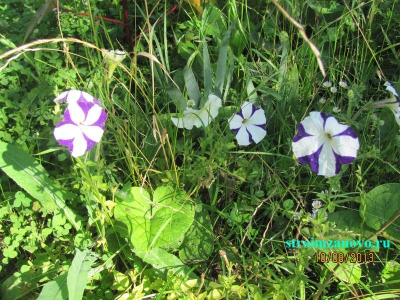
Zinnias all summer retain the brightness of their color. Just like gladiolus, they do not wither for a long time in a cut form and look great in summer holiday bouquets.

Kuril tea or potentilla, shrub, flowering yellow-white buds. Perfect for decoration.
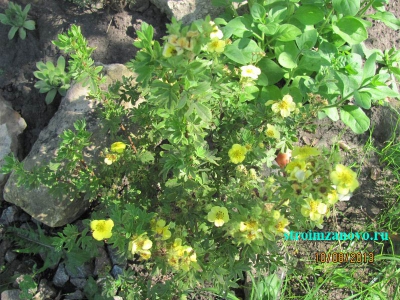
FLOWERS IN SEPTEMBER
In September, the garden begins to slowly subside. But there are plants that bloom even in the first autumn month. For example, September women who belong to the Aster family. These unpretentious flowers are characterized by late and long flowering, a variety of their color. A place for them must be provided in your flower garden.
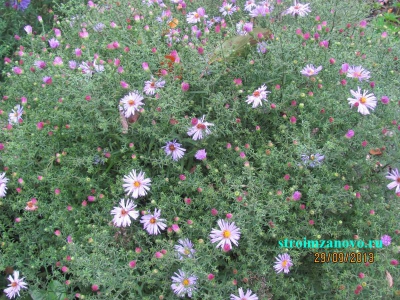
Also this month, amaranth is still blooming. Its dark-maroon spikelets look very beautiful against the background of yellowing grass.
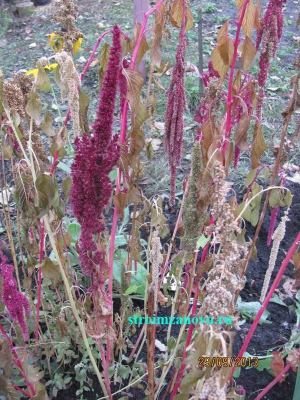
Hortensia is still blooming, but its inflorescences begin to change color from bright white to pale yellow-pink. The leaves, too, are beginning to dry out. But even in this form, this plant is an ornament of the autumn garden.
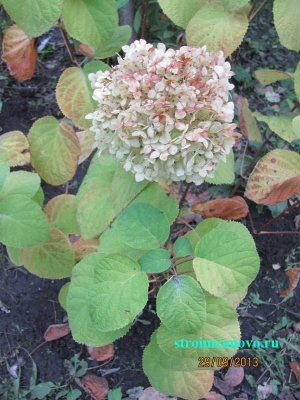
Snapdragon - another plant with late flowering. Its small beautiful inflorescences will delight gardeners before the first autumn frosts.
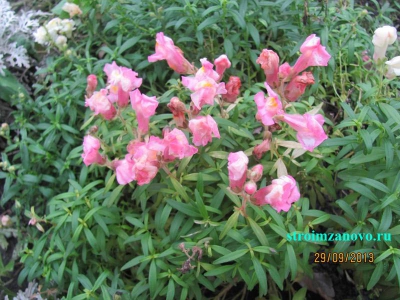
Sedum (sedum) blooms very brightly in September. This small, undersized plant will add color to your alpine hill.

And, of course, phlox still please flower growers with its beauty, bright colors and wonderful aromas.
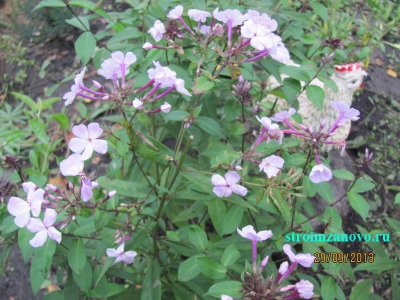
Flower garden is a real living substance. In order for him to bring joy and raise his spirits, you need to surround him with care and love. And then your suburban area will become a picturesque corner in which you want to be again and again.
July Garden in our northern latitudes is a real carnival of colors of various shapes, colors and aromas! Each gardener is proud and happy with the beauty that has blossomed in his garden, thanks to the tireless work and the eternal search for something extraordinary.
In summer, the king of the garden can be deservedly called krasnodnev (day lily, gemerokalis) . An old and always fashionable, completely unpretentious plant of the lily family adorns the garden with its lush bushes with narrow linear leaves from early spring to late autumn. Countless varieties and forms gemerokalisa bloom from May to October, it remains only to choose the most beloved. The flowers of the daylily are large, funnel-shaped, six-fold with a small tube and very similar to flowers of a tubular lily. Some varieties of flowers exude a delicate fragrance. The color of the flowers is the most diverse, in yellow, orange, brownish, bronze, crimson, purple, lilac and almost white. Plant height varies from 30 to 100 cm. Krasnodnev grows flawlessly in sunny and semi-shady places on clayey, nutritious, moderately moist soil. This is a traditional plant for casing ponds. Faded flowers need to be removed - this will preserve the decorativeness and prolong flowering. Daylily breeds division of the bush, and easily transfers transplant at any time (except for flowering). Winter-hardy and durable.
Lychnis Chalcedony or Adonis - one of the brightest garden plants. His orange-red corymbose large inflorescences resemble carnation Turkish in structure and poppy Oriental in color. The bush of hechnis up to 1 m high as if with fire burns in June-July, giving energy and vigor to those who admire them. There are varieties and garden forms with white simple and double flowers. If you timely remove fading heads, axillary peduncles bloom all summer until late autumn, burning with bright scarlet light in the sun.
One of the main characters of the July garden is, undoubtedly, 60-80 cm high. Most of its varieties bloom in July, although the bloom of this species can be admired from June to September. Compact shrubs with characteristic peristo-cut leaves, dull or glossy, light or dark green, in some varieties - anthocyanin colored, themselves decorate the garden from spring to late autumn. Astilba blooms in all the richness of its openwork paniculate inflorescences with the smallest flowers of bright and delicate shades of white, pink, lilac, red, purple, ruby, red-violet, cream color - a fascinating sight! It is especially impressive if the astilba varieties are arranged in fairly large groups. Gives a great cut, especially well combined with roses and perennial gypsophila. Dried inflorescences are valuable material for winter compositions.
Other types of astilbe are also grown. Astilba Thunberg 80 cm tall with dark green shiny leaves and drooping inflorescences has many varieties. Low-growing varieties obtained from astilba prostolistnoy (height 30 cm) and Chinese astilbe (height 15-20 cm). The most miniature is astilba bare 10-15 cm tall with pink or cream flowers, it is used on alpine slides.
Astilba prefers light and semi-shady areas of the garden with moist air, clay nutrient soil of sufficient moisture. The rhizome of its growing up, so you need regular sprinkling of fresh fertile soil in autumn and spring. Propagated by dividing the bush spring or autumn. Winters without shelter.
Diverse sedum , saxifragi indispensable in the creation of stony gardens, carpet compositions. They have a rich palette of colors of stems, leaves and flowers. Ground cover species easily propagate by cuttings or daughter rosettes (young), offspring, dividing the bushes throughout the season.
- very simple in culture and very diverse in types, varieties and colors. Achilles Tavolgova , or golden yarrow, grows up to 100-120 cm, blooms with bright yellow buds (shields) in July. Cirrus gray-green leaves have a spicy scent. Achilles ordinary 50-70 cm in height in recent years has become the ancestor of many hybrid forms with green peristolereznymi leaves, with pink, carmine, red, cream and white flowers in thyroid inflorescences. There are many varieties of both species. Achilles ptarmika , or the chihotny grass, considerably differs in appearance from above described. The height of the plants is 30-70 cm, the leaves are lanceolate, whole, the inflorescences are a loose brush consisting of pure white simple or terry flowers. The most famous variety is Pearl with double flowers. It blooms from July to September. It grows easily due to creeping rhizomes. In rainy summer and in the shade it stretches up to 1 m and lies down, therefore it needs a garter.
All types of Achilles are good in cutting, which is harvested for winter compositions. In this case, the shoots cut at full dissolution are tied up in small bunches and suspended in a shaded and ventilated place.
To the soils of Achilles is undemandingbut grows best in fertile, well-drained, sunny places. The first two types of Achilles are quite drought resistant. The plant is propagated by dividing the bushes in spring or autumn, as well as sowing seeds before winter. Winters without shelter.
- very elegant, spectacular plants with bright colors of large flower baskets with a diameter of 10-12 cm. Rudbeckia hybrid grows up to 120 cm, its inflorescences glow with red and yellow fire until the end of the season, sometimes until October, if you timely remove fading heads. Any garden, of course, benefits from the presence of even a few bushes of rudbeckia and a hybrid. Its other species are with yellow reed flowers and dark brown, almost black. (rudbeckia is beautiful) or greenish yellow (glossy orebeckia) conical center of tubular flowers are its excellent partners. Hybrids rudbeckia hairy have a two-year cycle of life, so it is important not to forget to sow at least one head of ripe seeds before winter, so that the flowering is not interrupted. The oldest, from the village garden, rudbeckia разрез golden ball г with densely terry golden-yellow inflorescences and tall stems up to 2 m tall, still regularly serves beauty, ennobling with the presence of even unsightly fences, outbuildings and other objects requiring decoration . All types of rudbeckia are unpretentious, make penumbra and moist soils, on fertile soils bloom more abundantly.
Blossom in the July garden , , false Kamchatka.
E. Kuzmina, florist Photo: O. Filippova
Walking through the July garden, I want to rejoice: the green mass is growing, bright colors are added, and the flowers replace and complement each other.
Today is July 20, almost the middle of summer. Let's see what flowers bloom in July, and which are no longer (from those that we described earlier); Offhand, it seems that the July colors are larger than the June ones.
It is difficult to say whether this is in fact, because it is, of course, utopia to take and count all the flowers on your garden plot one by one. It hurts a lot of them: small, large, high, and hiding somewhere below ...
So, let's take a walk around the garden, but first let us remember what we saw flowers in june . Here, for example, my aquilegia is almost invisible, the bright gravel has faded. There are no luxurious odorous brushes on the lilac bushes that were chosen by the bronze beetle last month. And all are cut off peonies flowers which at the end of June again pleased with its magnificence; and empty green leaves-cups curly honeysuckle , previously so attracted bumblebees. Bloomed one-year linen.
But look, under the July sun the petunias continue to bloom magnificently, in some places there are some bright orange poppies, in some places the carnation flowers look.
Clematis continue to climb higher and higher, experiencing arched supports for flowers. One clematis, light lilac, is not so tall yet, but the second, purple, is already taller than a man and blooms exactly above his head, right in the center of the flower support. There is also a pink clematis, but to buy a support for it from me until my hands reach it - it winds on homemade one.
Delphiniums delight the eye in July, which, by the way, bloom for more than a week. I have a delphinium of pale blue hue, there is a rich blue color. Both are good, what can we say.
But bloomed nasturtium planted in a kind of flower pot along with white petunias. Quite an interesting copy: flowers terry, soft yellow-pink shade, in places with bright red streaks. It looks very attractive. I bought it this year for a change, and last time, I remember nasturtium flowers the flowers were bright orange.
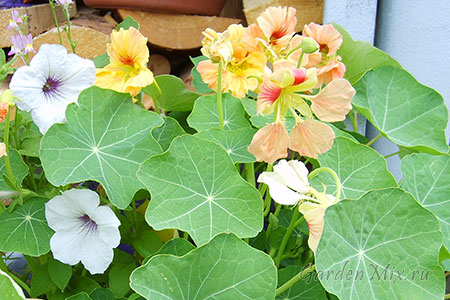
July is the flowering time of nasturtium.
What else do you want to pay attention to? For example, fiery-red flowers on fairly high stems, growing throughout the garden (mostly in clusters). Do you recognize? it lychnis , otherwise called, if you remember, zorkoy. It began to bloom in June, but now, I think, it has become much more.
I can not ignore another interesting ornamental plant - Mirabilis. The bush in my specimen is not very tall, 50 centimeters, funnel-shaped flowers, completely yellow. But on the next site I saw mirabilis with flowers of different colors - this is generally a miracle! But the main thing is the smell! During the day, the flowers of this plant are closed, bloom only in the evening, and by the night they begin to smell sweet, exuding a wonderful aroma. It smells like perfume, it seems to me.
But for example, in sour flowers, the flowers are open during the day, but if they suddenly start closing, that's all, wait for the rain. Sign of proven. And today, the day seems to be clear, but oxygen has closed and predicted the same rain, which passed only a few hours later in the evening.
July, summer, warmth ... I don’t want to think about autumn yet, but soon it will be time for her, with her troubles: to gather, to trim, to cover. And about cleaning and storage of dahlias , which is blooming now, will also have to remember. In the meantime, I look at my dahlia and rejoice: it has grown to human height - and this is in the thick shadow of two apple trees and a greenhouse!

Blossoms in July and Loosestrife.
Once again I look around: I see the snow-white spikelets of the Loose-ear Loosestrife with the tips going down, I see agrostemma , I see yellow and white with pink lilies, I see a couple of flowers of an armory ... Yes, there are many flowers in July. Let's see what will happen in August.


